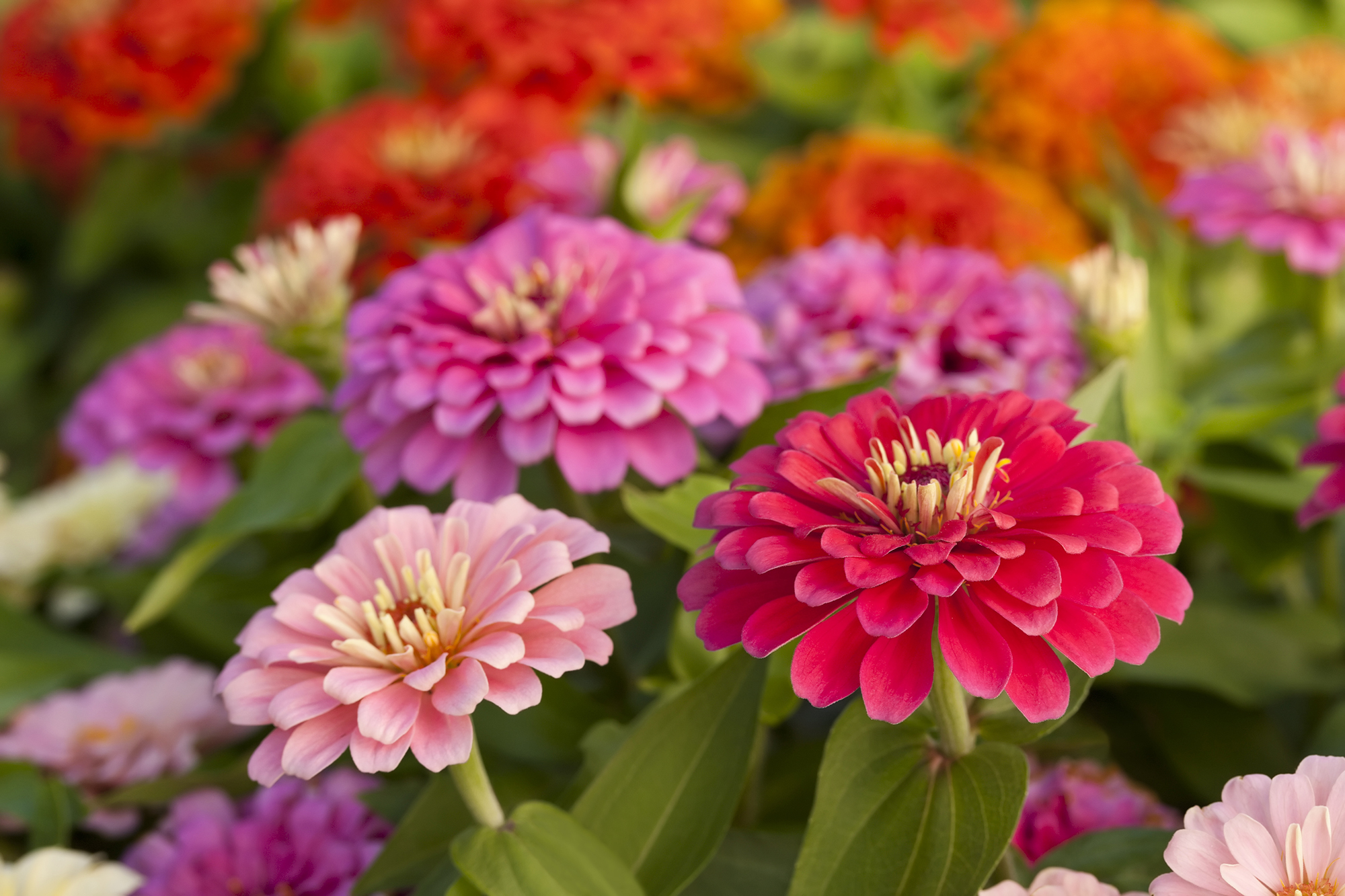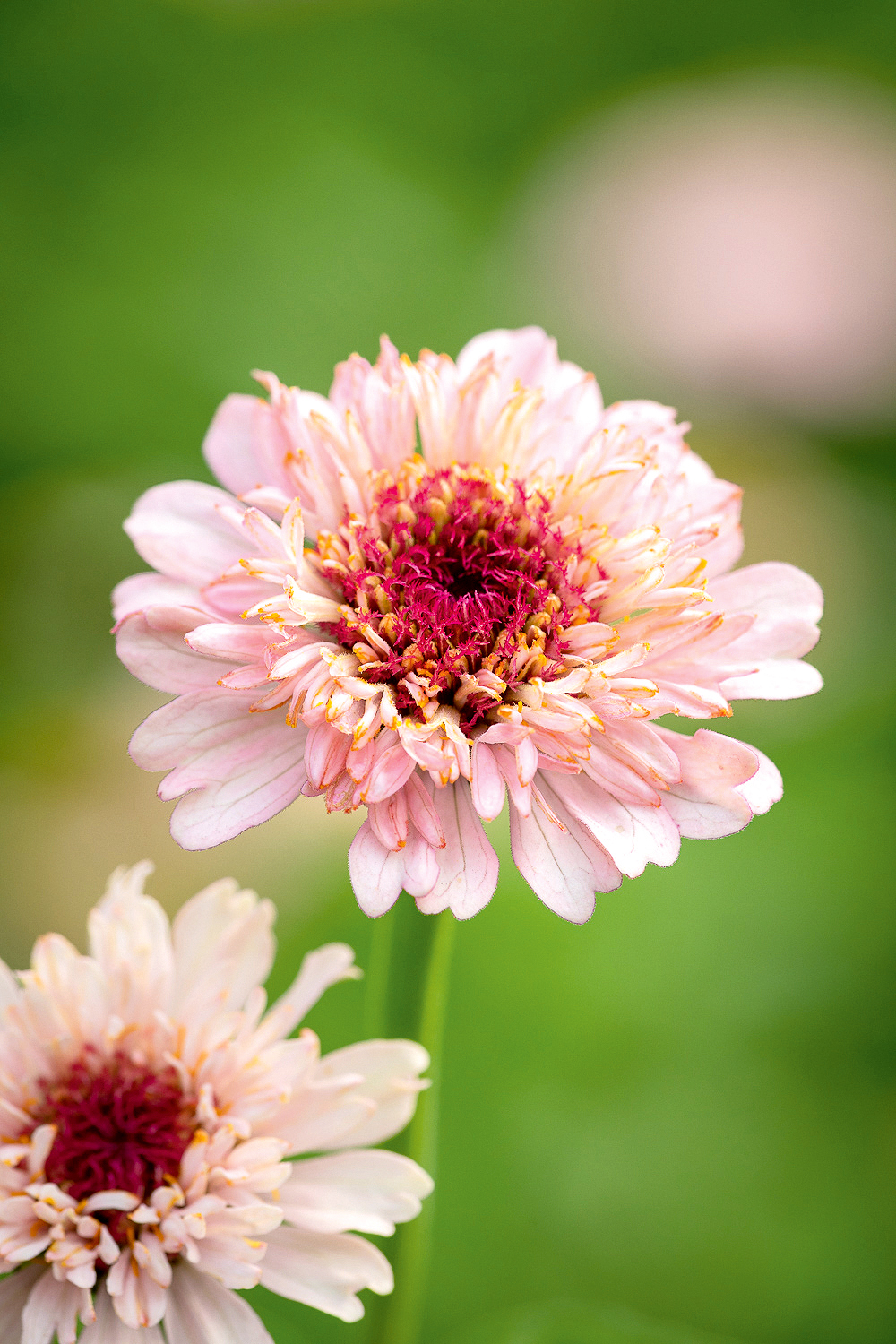How to collect zinnia seeds – for an endless supply of glorious flowers
Discover how to collect zinnia seeds to add color and interest to your garden next summer and beyond


Learn how to collect zinnia seeds, and your pots and borders will be packed with beautiful blooms all summer long.
Once you know how to grow zinnias, saving the seed is the next natural step, and is a fantastic way to experiment with different varieties.
‘Zinnias come in a huge range of colors, shapes, and sizes. They’re commonly grown as summer annuals to bring lots of color to garden beds,’ says Lindsay Pangborn, gardening expert for Bloomscape.
‘They grow fast and flower all season, making them the perfect candidate for collecting seeds.’
Growing zinnias from your own seed source is one of the most wonderful flower bed ideas, while the plants also do well in pots if you’re looking for container gardening ideas.
Make sure you know when to plant zinnia seeds to get the best out of them.
How to collect zinnia seeds – step-by-step guide
If you are happy to let your zinnias set seed wherever they may, then you don’t necessarily need to save the seed.
Design expertise in your inbox – from inspiring decorating ideas and beautiful celebrity homes to practical gardening advice and shopping round-ups.
‘If you let some of your zinnia flowers die naturally and fall to the ground they will germinate seeds by themselves,’ says Period Living’s gardening expert Leigh Clapp.
However, if you would like more control over where your flowers will be planted, then it’s best to learn how to collect zinnia seeds. Luckily, it’s easy to do if you follow a few simple steps.

1. Choose the best zinnia varieties
Zinnia seeds can be saved from all varieties to grow on the next year, however not all types will grow true to type.
‘Select varieties that have been open pollinated, as opposed to hybrids – which can vary widely in the next generation – and preferably organic so as not to harm bees,’ says Clapp.
Bear in mind that if you have a few different types of open-pollinated zinnias, they can become cross-pollinated.
‘You can prevent this by planting different types far apart, or by protecting individual flowers from cross-pollination,’ says Pangborn.
’To do this, you’ll need to cover a flower bud with a paper or mesh bag before it opens. This will prevent pollinators from getting to it, but will still allow the flower to go to seed.’
2. Nurture your zinnia flowers
Before thinking about how to collect zinnia seeds, focus on producing strong, healthy flowers. Learning how to keep zinnias blooming is important, and will keep your plants producing healthy, vibrant blooms.
‘For healthy zinnia plants, choose a full-sun location that receives six or more hours of direct sunlight each day,’ says Pangborn. ‘Keep them well watered and feed them regularly with a bloom-boosting fertilizer that’s high in phosphorus.’
Zinnias can be susceptible to powdery mildew, so avoid wetting their foliage if possible by aiming water to the soil or using a drip irrigation system.
‘If you must overhead water – and many of us do! – then water early in the day. This ensures the foliage will dry quickly thanks to the sun and heat,’ adds Pangborn.
3. Saving zinnia seeds
Wait until the flowers have begun to fade before saving zinnia seeds.
‘Allow flowers to decline and remain on the plant. You can remove most of them – a process called deadheading – since they can become unsightly, but it’s important to allow a few to remain,’ says Pangborn.
‘As the petals wither away, the seed begins to form where the center of the flower was. This will gradually dry out, and it’s important to leave it until it is completely dry and crispy.’
Once the flower has dried out it will have turned brown and feel dry to the touch.
At this stage, the zinnia seeds can be harvested. To do this, carefully cut the seed head off the plant. Gently shake or tap the seed head onto a piece of paper and you’ll see the individual seeds fall out.
‘Pour the seed into a paper envelope. Be sure to label the variety for next year, and store it in a cool, dry place,’ adds Pangborn.
Zinnia seeds should keep for at least two years.

4. How to separate zinnia seeds from chaff
Chaff refers to the seed covering and debris that comes away with the seeds when they fall off the flowers.
The best way to remove this is simply to pick out the seeds – which will be flat and brown – and discard the chaff.
‘Proper drying will allow you to separate seeds from chaff easily,’ says Nastya Vasylchyshyna, a resident botanist expert for the NatureID app. ‘Discard and empty and rotten seeds along with the chaff.’
5. What do good zinnia seeds look like?
Zinnia seeds come in a variety of shapes and sizes.
‘They can be flat, spear-shaped, or elongated with sprouts at the end. All of them are suitable for planting, but spear-shaped seeds have lower viability,’ says Nastya.
‘Good seeds are solid and thick, gray- or brown-colored. Don’t leave the rotten black, affected, empty, or deformed ones, as they won’t germinate.’
6. Can you harvest zinnia seeds from cut flowers?
Saving zinnia seeds from cut flowers isn’t the best way to get quality seed.
‘Plants tend to be cut for sale when flowers are just beginning to open and haven't accumulated the nutrients necessary for seed formation yet,’ says Nastya.
‘Some seeds in cut flowers may be ripe, so you can try planting them. However, they will be far less viable than the seeds prepared properly.’

Melanie has worked in homes and gardens media for two decades. Having previously served as Editor on Period Living magazine, and worked on Homes & Gardens, Gardening Etc, Real Homes, and Homebuilding & Renovating, she is now focusing on her passion for gardening as a Senior Editor at Gardening Know How. As a keen home grower, Melanie has experimented with pretty much every type of vegetable at some point – with mixed results. Often it is the simplest things that elude you, which may explain why she just can't seem to master zucchinis.